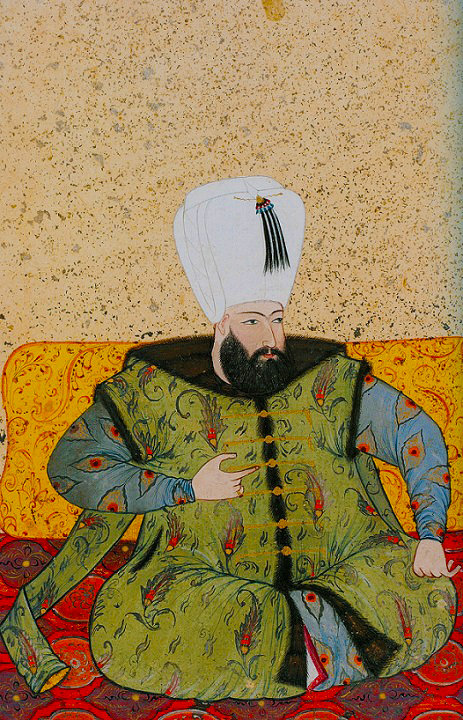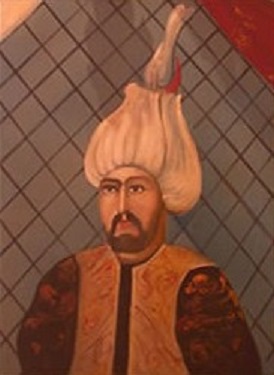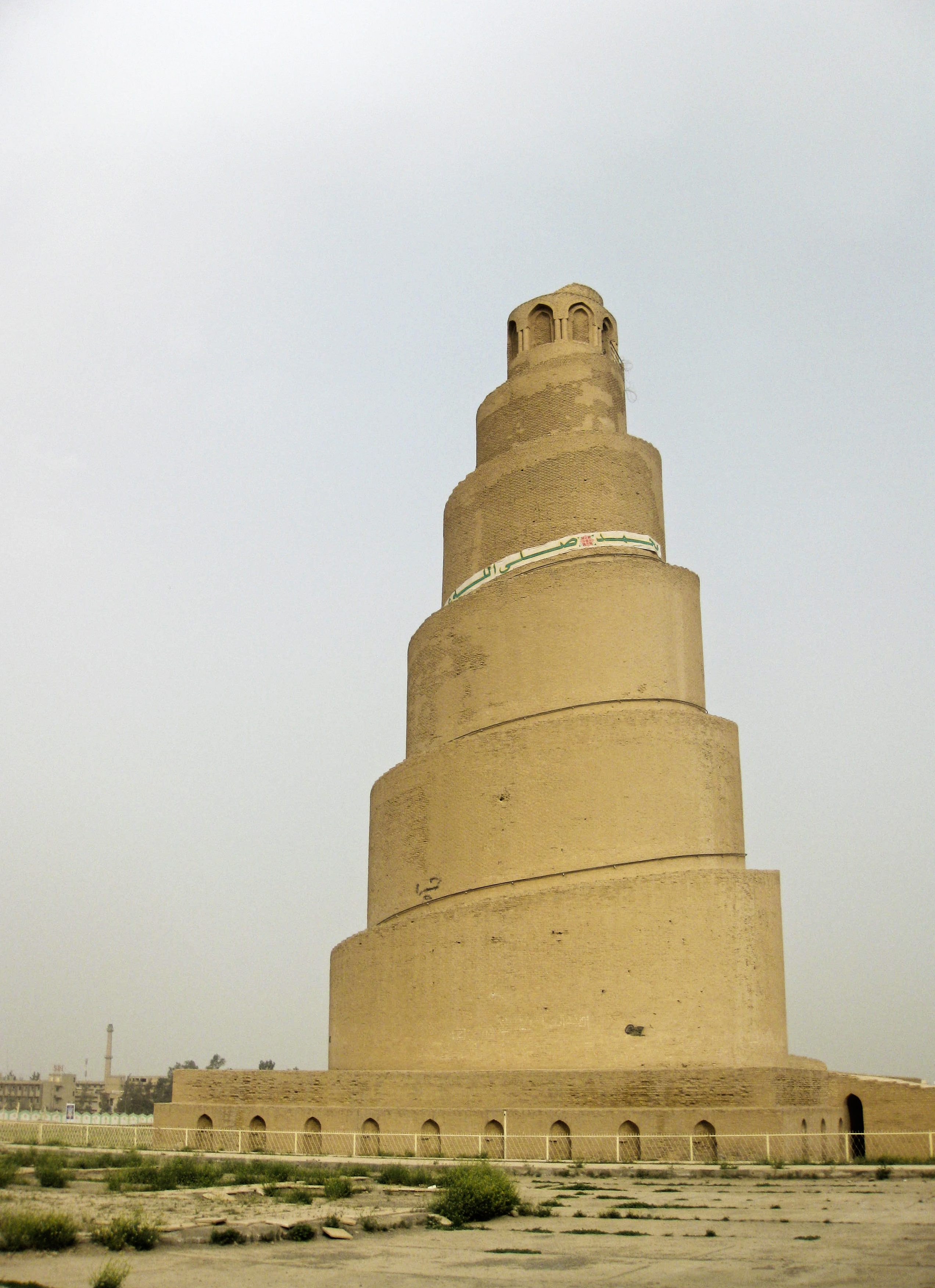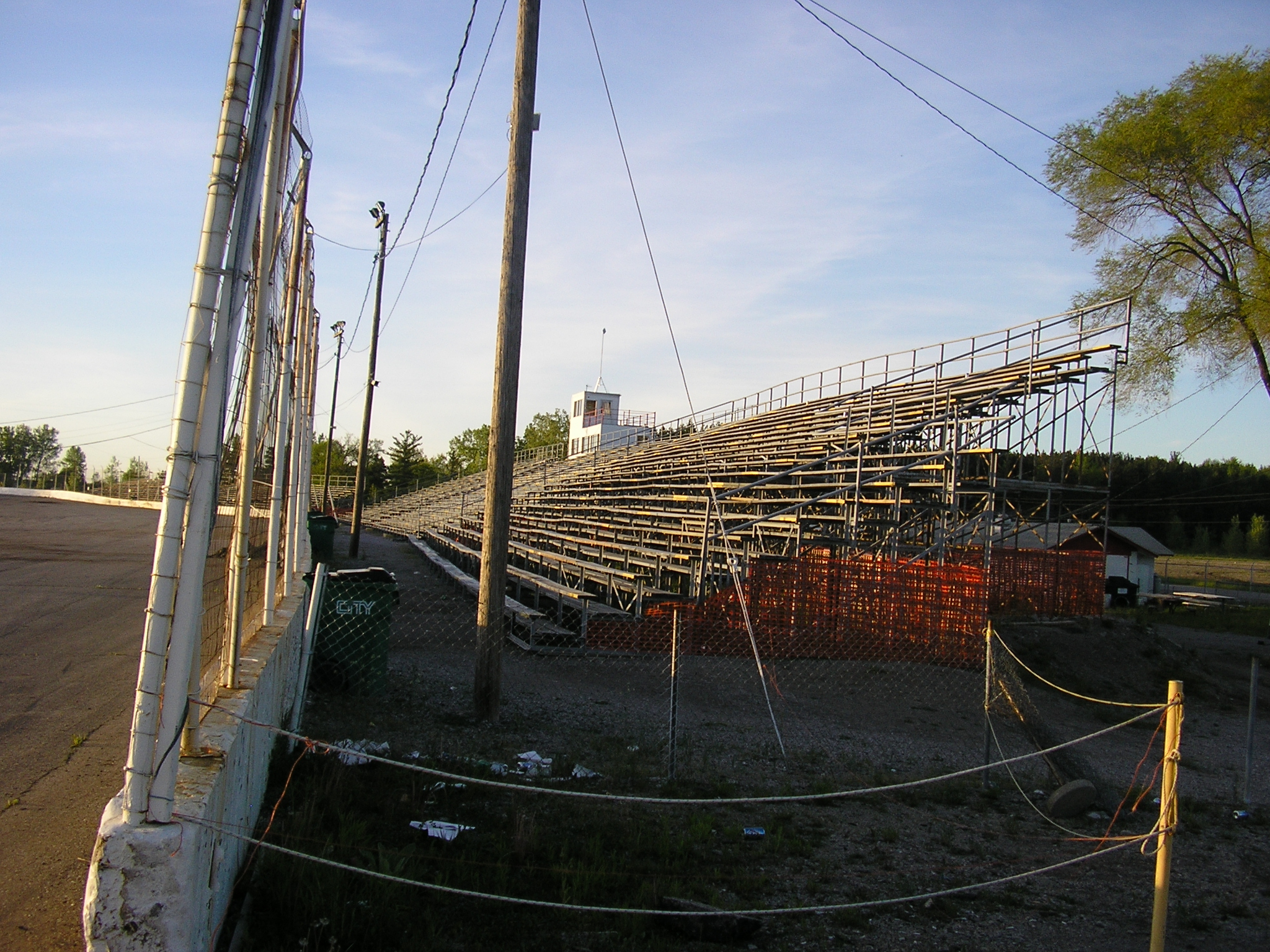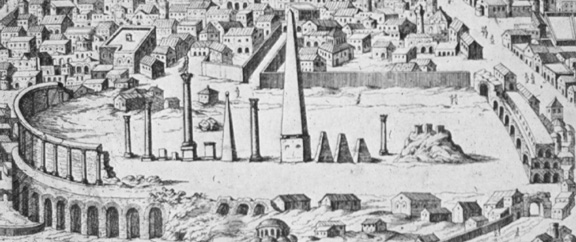|
Sultan Ahmed I Mosque
The Blue Mosque, officially the Sultan Ahmed Mosque (), is an Ottoman-era historical imperial mosque located in Istanbul, Turkey. It was constructed between 1609 and 1617 during the rule of Ahmed I and remains a functioning mosque today. It also attracts a large number of tourists and is one of the most iconic and popular monuments of Ottoman architecture. The mosque has a classical Ottoman layout with a central dome surrounded by four semi-domes over the prayer hall. It is fronted by a large courtyard and flanked by six minarets. On the inside, it is decorated with thousands of Iznik tiles and painted floral motifs in predominantly blue colours, which give the mosque its popular name. The mosque's ''külliye'' (religious complex) includes Ahmed's tomb, a madrasa, and several other buildings in various states of preservation. The mosque was built next to the former Hippodrome and stands across from the Hagia Sophia, another popular tourist site. The Blue Mosque was included ... [...More Info...] [...Related Items...] OR: [Wikipedia] [Google] [Baidu] |
Fatih
Fatih () is a municipality and district of Istanbul Province, Turkey. Its area is 15 km2, and its population is 368,227 (2022). It is home to almost all of the provincial authorities (including the mayor's office, police headquarters, metropolitan municipality and tax office) but not the courthouse. It encompasses the historical peninsula, coinciding with old Constantinople. In 2009, the district of Eminönü, which had been a separate municipality located at the tip of the peninsula, was once again remerged into Fatih because of its small population. Fatih is bordered by the Golden Horn to the north and the Sea of Marmara to the south, while the Western border is demarked by the Theodosian wall and the east by the Bosphorus Strait. History Byzantine era Historic Byzantine districts encompassed by present-day Fatih include: ''Exokiónion'', ''Aurelianae'', ''Xerólophos'', '' ta Eleuthérou'', ''Helenianae'', ''ta Dalmatoú'', ''Sígma'', '' Psamátheia'', ''ta K ... [...More Info...] [...Related Items...] OR: [Wikipedia] [Google] [Baidu] |
Hippodrome Of Constantinople
The Hippodrome of Constantinople (; ; ) was a Roman circus, circus that was the sporting and social centre of Constantinople, capital of the Byzantine Empire. Today it is a square in Istanbul, Turkey, known as Sultanahmet Square (). The word ''hippodrome'' comes from the Greek (), horse, and (), path or way. For this reason, it is sometimes also called ("Horse Square") in Turkish. Horse racing and chariot racing were popular pastimes in the ancient world and hippodromes were common features of Greek cities in the Hellenistic, Ancient Rome, Roman, and Byzantine eras. History and use Construction Although the Hippodrome is usually associated with Constantinople's days of glory as an imperial capital, it actually predates that era. The first Hippodrome was built when the city was called Byzantium, and was a provincial town of moderate importance. In AD 203 the Emperor Septimius Severus rebuilt the city and expanded its city wall, walls, endowing it with a hippodrome, an ... [...More Info...] [...Related Items...] OR: [Wikipedia] [Google] [Baidu] |
Ulema
In Islam, the ''ulama'' ( ; also spelled ''ulema''; ; singular ; feminine singular , plural ) are scholars of Islamic doctrine and law. They are considered the guardians, transmitters, and interpreters of religious knowledge in Islam. "Ulama" may refer broadly to the educated class of such religious scholars, including theologians, canon lawyers (muftis), judges ( qadis), professors, and high state religious officials. Alternatively, "ulama" may refer specifically to those holding governmental positions in an Islamic state. By longstanding tradition, ulama are educated in religious institutions (''madrasas''). The Quran and sunnah (authentic hadith) are the scriptural sources of traditional Islamic law. Traditional way of education Students of Islamic doctrine do not seek out a specific educational institution, but rather seek to join renowned teachers. By tradition, a scholar who has completed their studies is approved by their teacher. At the teacher's individual dis ... [...More Info...] [...Related Items...] OR: [Wikipedia] [Google] [Baidu] |
Sokollu Mehmed Pasha
Sokollu Mehmed Pasha (; ; ; 1505 – 11 October 1579) was an Ottoman statesman of Serb origin most notable for being the Grand Vizier of the Ottoman Empire. Born in Ottoman Herzegovina into an Orthodox Christian family, Mehmed was recruited as a young boy as part of so called "blood tax" to serve as a janissary to the Ottoman devşirme system of recruiting Christian boys to be raised as officers or administrators for the state. He rose through the ranks of the Ottoman imperial system, eventually holding positions as commander of the imperial guard (1543–1546), High Admiral of the Fleet (1546–1551), Governor-General of Rumelia (1551–1555), Third Vizier (1555–1561), Second Vizier (1561–1565), and as Grand Vizier (1565–1579, for a total of 14 years, three months, 17 days) under three sultans: Suleiman the Magnificent, Selim II, and Murad III.Imamović, Mustafa (1996). Historija Bošnjaka. Sarajevo: BZK Preporod. He was assassinated in 1579, ending his near 15-years ... [...More Info...] [...Related Items...] OR: [Wikipedia] [Google] [Baidu] |
Minaret
A minaret is a type of tower typically built into or adjacent to mosques. Minarets are generally used to project the Muslim call to prayer (''adhan'') from a muezzin, but they also served as landmarks and symbols of Islam's presence. They can have a variety of forms, from thick, squat towers to soaring, pencil-thin spires. Etymology Two Arabic words are used to denote the minaret tower: ''manāra'' and ''manār''. The English word "minaret" originates from the former, via the Turkish language, Turkish version (). The Arabic word ''manāra'' (plural: ''manārāt'') originally meant a "lamp stand", a cognate of Hebrew language, Hebrew ''Temple menorah, menorah''. It is assumed to be a derivation of an older Linguistic reconstruction, reconstructed form, ''manwara''. The other word, ''manār'' (plural: ''manā'ir'' or ''manāyir''), means "a place of light". Both words derive from the Arabic root ''n-w-r'', which has a meaning related to "light". Both words also had other meani ... [...More Info...] [...Related Items...] OR: [Wikipedia] [Google] [Baidu] |
Bleacher
Bleachers (North American English), or stands, are raised, tiered rows of benches found at sports-fields and at other spectator events. Stairways provide access to the horizontal rows of seats, often with every other step enabling access to a row of benches. Benches range from simple planks to elaborate ones with backrests. Many bleachers are open to the ground below so that there are only the planks to sit and walk on. Some bleachers have vertical panels beneath the benches, either partially or completely blocking the way to the ground. Name origins The open seating area in baseball was called the "bleaching boards" as early as 1877. The term "bleachers" used in the sense of benches for spectators can be traced back to at least 1889; named as such because the generally uncovered wooden boards were "bleached by the sun". ''The Dickson Baseball Dictionary'' lists as a ''secondary'' definition the fans sitting in them. By the early 1900s, the term "bleachers" was being used ... [...More Info...] [...Related Items...] OR: [Wikipedia] [Google] [Baidu] |
Sultanahmet Square
The Hippodrome of Constantinople (; ; ) was a circus that was the sporting and social centre of Constantinople, capital of the Byzantine Empire. Today it is a square in Istanbul, Turkey, known as Sultanahmet Square (). The word ''hippodrome'' comes from the Greek (), horse, and (), path or way. For this reason, it is sometimes also called ("Horse Square") in Turkish. Horse racing and chariot racing were popular pastimes in the ancient world and hippodromes were common features of Greek cities in the Hellenistic, Roman, and Byzantine eras. History and use Construction Although the Hippodrome is usually associated with Constantinople's days of glory as an imperial capital, it actually predates that era. The first Hippodrome was built when the city was called Byzantium, and was a provincial town of moderate importance. In AD 203 the Emperor Septimius Severus rebuilt the city and expanded its walls, endowing it with a hippodrome, an arena for chariot races and other enter ... [...More Info...] [...Related Items...] OR: [Wikipedia] [Google] [Baidu] |
Mehmed III
Mehmed III (, ''Meḥmed-i sālis''; ; 26 May 1566 – 22 December 1603) was the sultan of the Ottoman Empire from 1595 until his death in 1603. Mehmed was known for ordering the execution of his brothers and leading the army in the Long Turkish War, during which the Ottoman army was victorious at the decisive Battle of Keresztes. This victory was however undermined by some military losses such as in Győr and Nikopol. He also ordered the successful quelling of the Jelali rebellions. The sultan also communicated with the court of Elizabeth I on the grounds of stronger commercial relations and in the hopes of England to ally with the Ottomans against the Spanish. Early life Mehmed was born at the Manisa Palace on 26 May 1566, during the reign of his great-grandfather, Suleiman the Magnificent. He was the son of Murad III, himself the son of Selim II, who was the son of Sultan Suleiman and Hurrem Sultan. His mother was Safiye Sultan, an Albanian from the Dukagjin Highlan ... [...More Info...] [...Related Items...] OR: [Wikipedia] [Google] [Baidu] |
Murad III
Murad III (; ; 4 July 1546 – 16 January 1595) was the sultan of the Ottoman Empire from 1574 until his death in 1595. His rule saw battles with the Habsburg monarchy, Habsburgs and exhausting wars with the Safavid Iran, Safavids. The long-independent Saadi Sultanate, Morocco was for a time made a vassal of the empire but regained independence in 1582. His reign also saw the empire's expanding influence on the eastern coast of Africa. However, the empire was beset by increasing corruption and inflation from the New World which led to unrest among the Janissary and commoners. Relations with Elizabethan England were cemented during his reign, as both had a common enemy in the Spanish Empire, Spanish. He was also a great patron of the arts, commissioning the ''Siyer-i Nebi, Siyer-i-Nebi'' and other illustrated manuscripts. Early life Born in Manisa on 4 July 1546, Şehzade Murad was the oldest son of Şehzade Selim II, Selim and his powerful wife Nurbanu Sultan. He received a good ... [...More Info...] [...Related Items...] OR: [Wikipedia] [Google] [Baidu] |
Selim II
Selim II (; ; 28 May 1524 – 15 December 1574), also known as Selim the Blond () or Selim the Drunkard (), was the sultan of the Ottoman Empire from 1566 until his death in 1574. He was a son of Suleiman the Magnificent and his wife Hurrem Sultan. Selim had been an unlikely candidate for the throne until his brother Mehmed died of smallpox, his half-brother Mustafa was strangled to death by the order of his father and his brother Bayezid was killed on the order of his father after a rebellion against him and Selim. During his reign, his grand vizier Sokollu Mehmed Pasha exerted significant control over state governance. The conquest of Cyprus and Tunis were notable achievements during his reign but setbacks occurred in the Battle of Lepanto and the failed capture of Astrakhan as part of the war with Russia. Early years Selim was born on 28 May 1524 in Constantinople during the reign of his father, Suleiman the Magnificent. His mother was Hürrem Sultan, an Orthodox pries ... [...More Info...] [...Related Items...] OR: [Wikipedia] [Google] [Baidu] |
Peace Of Zsitvatorok
The Peace of Zsitvatorok (or Treaty of Sitvatorok) was a peace treaty which ended the 13-year Long Turkish War between the Ottoman Empire and the Habsburg monarchy on 11 November 1606. The treaty was part of a system of peace treaties which put an end to the anti-Habsburg uprising of Stephen Bocskai (1604–1606). The treaty was negotiated between 24 October and 11 November 1606 ''ad Situa Torock'', at the former mouth of the Žitava River (Hungarian: ''Zsitva''), which flows into the Danube in Royal Hungary (today part of Slovakia). Kenneth Meyer Setton, ''The Papacy and the Levant, 1204–1571'', Volume IV: The Sixteenth Century from Julius III to Pius V (Philadelphia: American Philosophical Society, 1984), p. 1097, n. 191. This location would later become the small settlement of Žitavská Tôňa (Hungarian: ''Zsitvatorok''), a part of the municipality of Radvaň nad Dunajom (Hungarian: ''Dunaradvány''). The peace was signed for a term of 20 years and has been interpreted ... [...More Info...] [...Related Items...] OR: [Wikipedia] [Google] [Baidu] |
Levni
Levni may refer to: * Levni Yilmaz (born 1973), American independent animated film maker, artist and publisher * Abdulcelil Levni (died 1732), Ottoman Turkish painter and miniaturist * Leuni, an ancient Celtic tribe of Gallaecia {{disambig Turkish-language surnames Turkish masculine given names Masculine given names ... [...More Info...] [...Related Items...] OR: [Wikipedia] [Google] [Baidu] |
